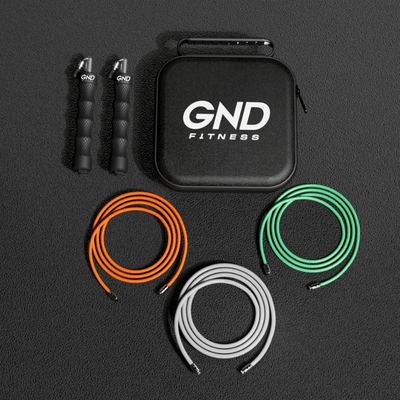
Skipping: Speed Rope vs Heavy Rope
Garth Stivey
When it comes to selecting a skipping rope, the choice of weight can make a big difference to the type of workout you end up doing. Yet, most people are completely in the dark about whether they should buy a light or a heavy rope. In this article, I’ll lay out the facts so that you can make the right choice about your skipping rope weight.
Why Does Weight Matter?
Skipping ropes for the fitness market started out as pretty basic. Then, as the fitness skipping craze kicked off, new innovations were built into skipping ropes. The biggest differentiator between ropes became the weight, with two basic categories of fitness skipping rope:
The Speed Rope is also known as the light rope. The speed rope is designed to increase skipping speed. It’s great for athletes and others keen to improve their agility, quickness and coordination. On the other hand, a weighted rope is better for beginners to get to grips with, as well as being better for strength and muscle gain and fat loss.
So, Which is Best?
The performance difference between a light and a heavy rope essentially comes down to speed; you will be able to skip faster with a lighter weighted rope. A slow skip can be defined as a workout that does not elevate your heart rate beyond 70 percent of its maximum and that you can sustain for 10-15 minutes. To determine your maximum heart rate subtract your age from 220.
This type of slower skipping workout is the best to build endurance, develop your cardiovascular fitness, strengthen your heart and increase your stamina.
A heavy rope is best for this type of workout.
A skipping workout is defined as fast if it takes your heart rate up to 80-90 percent of your maximum and is sustained for 2-5 minutes. It may involve advanced speed moves like double unders. This is the best type of skipping workout to develop speed, strength and power. It is also the type of training you perform for high intensity interval training (HIIT).
Weighted Rope Advantages
- Best for beginners
- Better for working the upper body (shoulders, biceps, triceps)
- Best when learning new moves
- Better for footwork control
Speed Rope Advantages
- Ideal for HIIT workouts
- Great for speed, agility and coordination
- Best for athletes
Features of a Weighted Rope
Handle
The weight of the skipping rope may be in the handles or the rope. When it is in the handles, the ropes have longer handles to accommodate the extra weight. This requires extra wrist strength to turn the rope.
Weight
The extra weight that is included in a weighted skipping rope ranges a quarter of a pound up to two pounds. That may not sound like much but when you’re doing hundreds of skipping revolutions, it can make a serious difference. The most common skipping rope weights are half pound and one pound.
Ball Bearings
A weighted heavy rope should feature high quality ball bearings. This will minimize the strain on the wrists as you skip.
Can You Really Build Muscle With a Skipping Rope?
Skipping with a heavy rope will not turn you into a bodybuilder. But it can help to add muscle mass to your shoulders, calves, biceps and triceps. The best way to stimulate muscle growth through skipping with a heavy rope is to do a few sets of skipping after an arm or shoulder workout. Doing so will engorge those muscles with blood and provide you with an awesome pump to finish off your weight workout.
Where is the Weight?
There are two designs of heavy skipping rope. The first type has the extra weight in the handle while the second has it in the rope itself. Which one you choose makes a difference. When the weight is contained in the handles, you are concentrating the extra work on the wrists, hands and shoulders. The rest of the body doesn’t need to do much extra work. Another problem with having the weight in the handles is that it leads to uneven weighing of the rope. This can negatively impact the rhythm and overall feel of the jump.
With a rope that evenly distributes the weight throughout the entire rope, however, you are able to achieve a more consistent movement of the rope. The weight will move faster, generating more centrifugal force and recruiting more of your body’s muscles.
The key takeaway here is to look for a rope that has the weight evenly distributed through its length rather than being concentrated in the handles.
Wrap Up
When it comes to the weight of your skipping rope, you need to think about the purpose of your training. If you are mainly interested in developing speed, agility and performing advanced moves such as double unders, then the light, or speed, rope is the one for you. Speed ropes are also best for HIIT training.
On the other hand, if you are after endurance, stamina, cardiovascular benefits and muscle and strength development, you should opt for a heavy skipping rope.






























